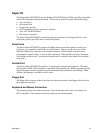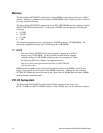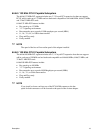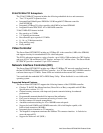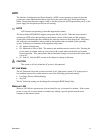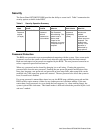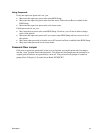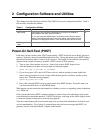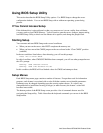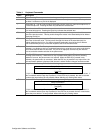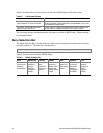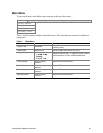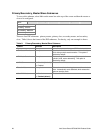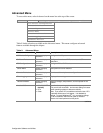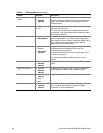
21
2 Configuration Software and Utilities
This chapter describes the Power-On Self-Test (POST) and server configuration utilities. Table 3
below briefly describes the utilities.
Table 3. Configuration Utilities
Utility Description and brief procedure Page
BIOS Setup If the system does not have a diskette drive or the drive is disabled or
misconfigured, use BIOS Setup to enable it.
Or, you can move the CMOS jumper on the server board from the default
setting (Protect CMOS memory) to the Clear setting; this position will allow
most server configurations to boot. Then use the recovery disk to recover.
22
BIOS Upgrade
Utility
Use to upgrade the BIOS. 42
Power-On Self-Test (POST)
Each time you turn on the system, POST starts running. POST checks the server board, processor,
memory, keyboard, and most installed peripheral devices. During the memory test, POST displays
the amount of memory that it is able to access and test. The length of time needed to test memory
depends on the amount of memory installed. POST is stored in flash memory.
1. Turn on your video monitor and server. After a few seconds POST begins to run.
2. After the memory test, these screen prompts and messages appear:
Press <F2> key if you want to run SETUP
3. If you do not press <F2> and do NOT have a device with an operating system loaded, the
above message remains for a few seconds while the boot process continues, and the system
beeps once. Then this message appears:
Operating system not found
4. Press <Esc> during POST to pop up a boot menu when POST finishes. From this menu you
can choose the boot device or enter BIOS Setup.
What appears on the screen after this depends on whether you have an operating system loaded and
if so, which one.
If the system halts before POST completes running, it emits a beep code indicating a fatal system
error that requires immediate attention. If POST can display a message on the video display screen,
it causes the speaker to beep twice as the message appears.
Note the screen display and write down the beep code you hear; this information is useful for your
service representative. For a listing of common beep codes and error messages that POST can
generate, see the “Solving Problems” chapter in this manual.



